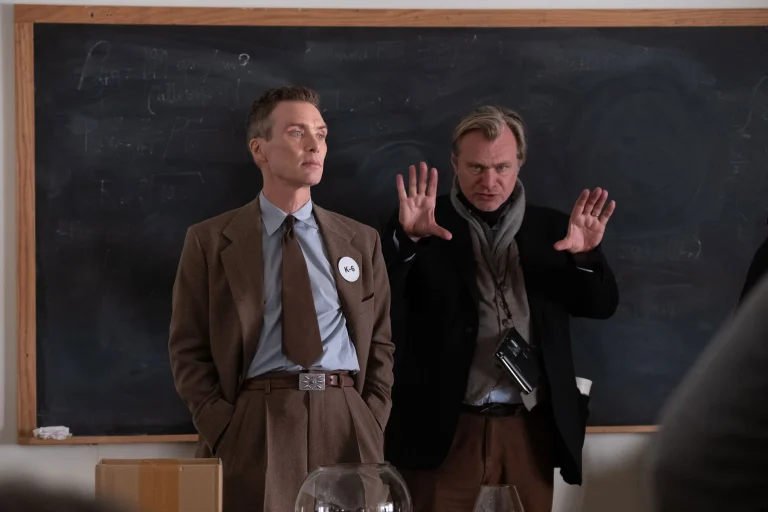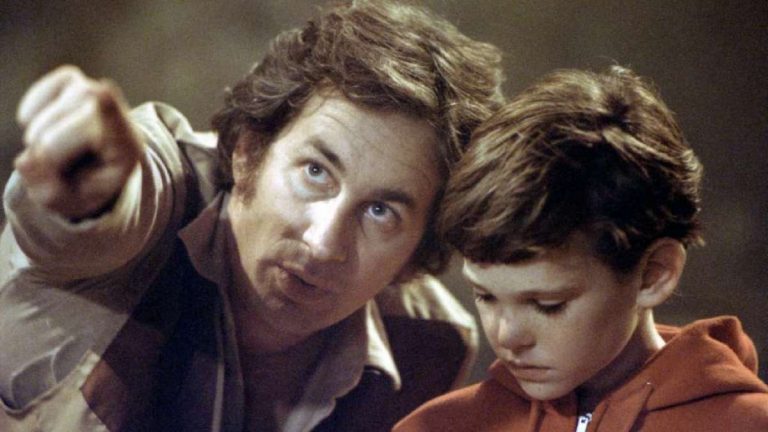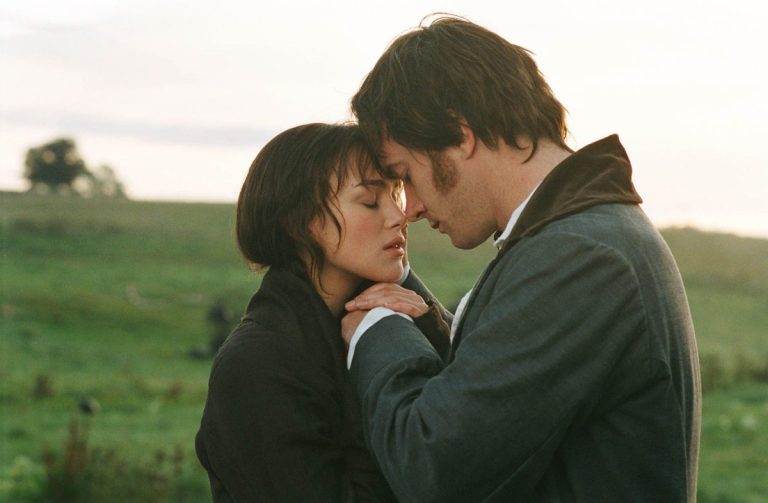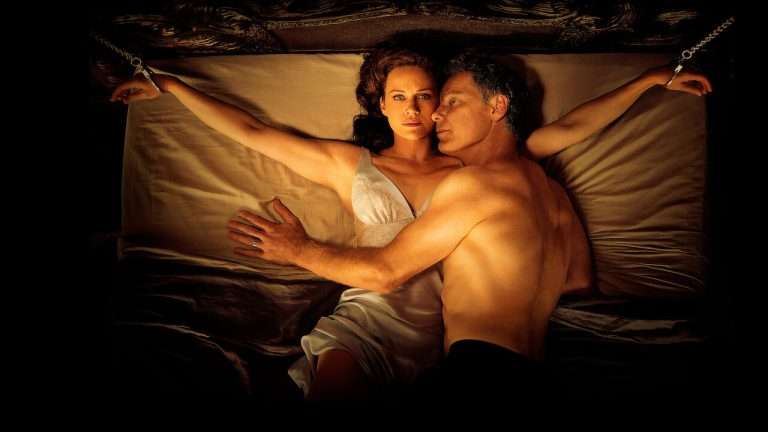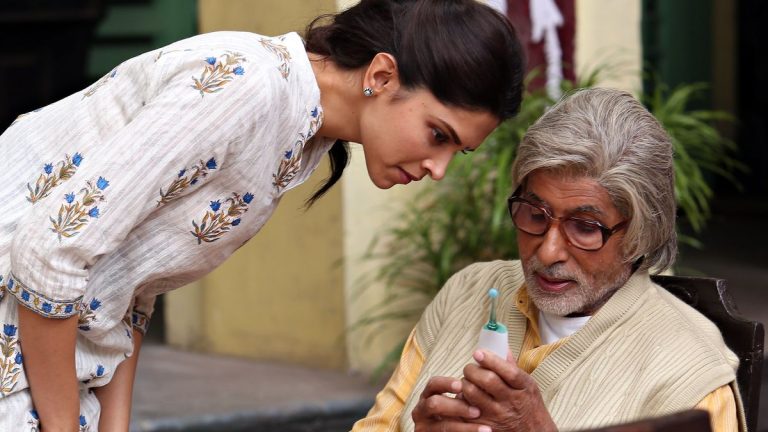About once a week, I take a chance on a movie expecting it to be bad. I’m the type of viewer who will tolerate bad movies just to see where the director’s head is at. Filmmaking, to me, is as much about exploring intent as it is about execution. In 2015, one such gamble led me to a film shot entirely on three iPhone 5S devices. I expected an average-to-terrible gimmick, a movie reliant on its novelty rather than substance. But to my astonishment, Sean Baker’s “Tangerine” (2015) was anything but a gimmick. As cheap as it was to make, the film is an impressive piece of work that has since made cinematic history. A few years later, it’s become a personal Christmas classic I revisit every December.
Writer-director Sean Baker embodies the economic efficiency of Italian neorealism, the rebelliousness of Dogma 95, the gritty focus of the Safdie brothers, and none of the overindulgence of Harmony Korine. Here is a filmmaker who uses every available resource to tell the most authentic story someone of his background could. Tangerine serves as a reminder that there’s no formula to this 150-year-old invention called cinema: you don’t need a colossal budget or state-of-the-art equipment to make a great movie. The film’s rawness, from its characters and acting to its script and locations, could never have been enhanced by a bloated budget or a massive crew. To quote Top Gun: Maverick, “It’s not the plane; it’s the pilot.” Sean Baker proves it’s not the tools but how you use them that counts.
The Punk Energy of ‘Tangerine’
I love how punk this movie feels in its very DNA. Shot using technology readily available to the average person, “Tangerine” (2015) centers on marginalized people who are often excluded or condescended to by the Hollywood establishment. Its trans characters are played by trans actors, which was uncommon in 2015. For context, the most high-profile trans-centered films that year and before were “The Danish Girl” (starring Eddie Redmayne as a trans woman) and “Dallas Buyers Club” (featuring Jared Leto as a trans woman), both of which cast cisgender men in these roles. While these films gained accolades, they reinforced a systemic bias against trans performers. In contrast, “Tangerine” was a breath of fresh air. One of its iPhones now resides in the Academy Museum of Motion Pictures – a fitting acknowledgment of its cultural significance.
This film is a love letter to the modern Angeleno inner city in all its grit, grime, vibrancy, and absurdity. Baker refuses to judge his characters. He portrays them with larger-than-life energy that still feels true to life. These are flawed, colorful, imperfect characters who feel alive in every frame. A scorned woman’s quest to confront her pimp fiancéé about his infidelity is simple, but the richness of the subplots elevates the story into something extraordinary. In many ways, “Tangerine” feels like a loose L.A. tale in the vein of Quentin Tarantino or Paul Thomas Anderson’s 1990s work.
Authentic Representation
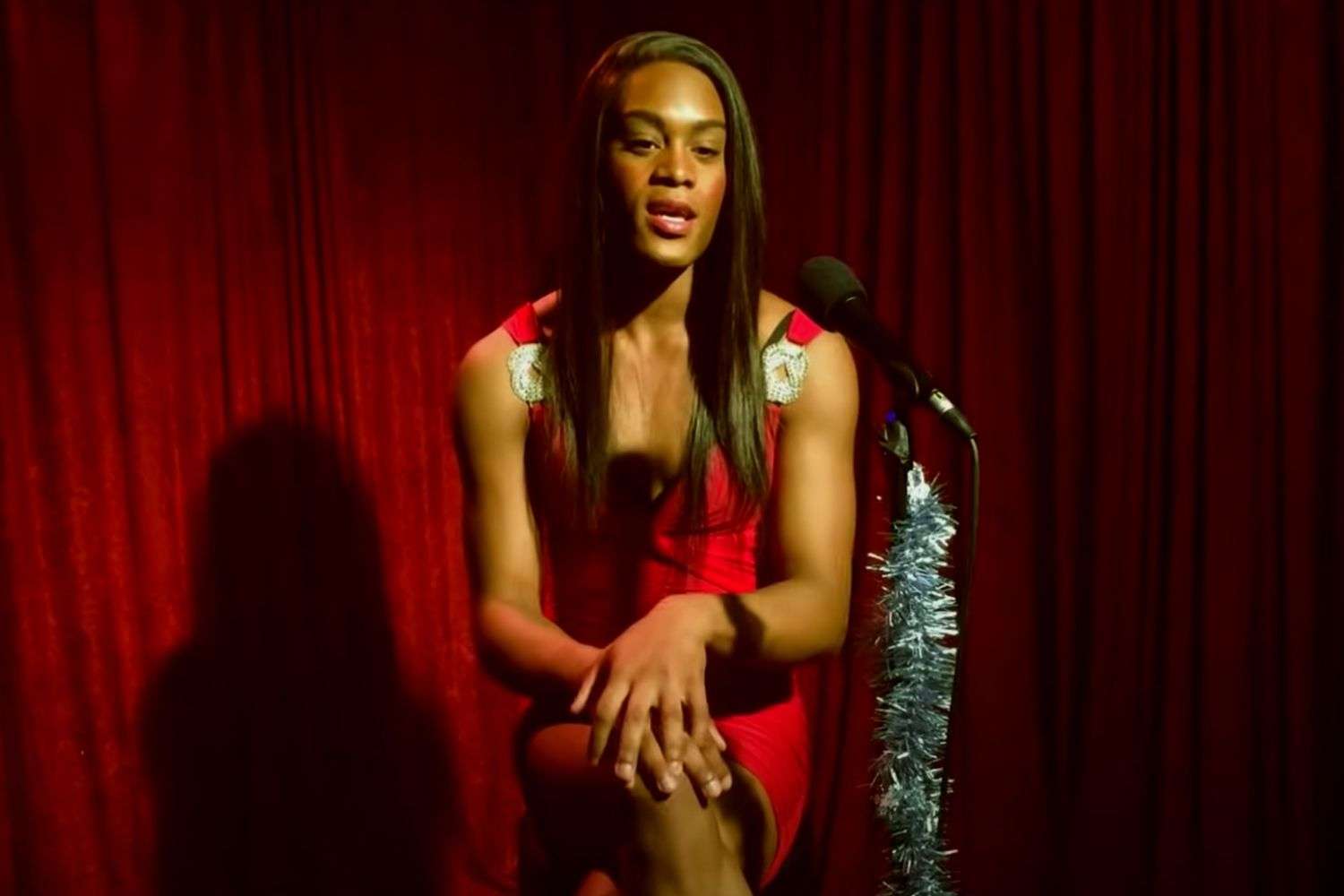
What sets “Tangerine” apart is its refusal to lean into tragedy, victimhood, or poverty porn. A lesser film might have overdramatized its characters’ struggles, playing to the sympathies of a cisgender audience. Instead, Baker tells a fictional story that centers on the everyday experiences of trans women of color. The hardships they face are depicted with authenticity, but the humor woven throughout the narrative never undermines the gravity of their circumstances. The film’s characters use humor as a coping mechanism, a natural extension of their personalities and survival strategies. It’s this balance of humor and seriousness that makes “Tangerine” so impactful.
For example, the dynamic between Sin-Dee Rella (played by Kitana Kiki Rodriguez) and Alexandra (Mya Taylor) captures a sisterhood that is both heartwarming and chaotic. They’re loud, dramatic, and deeply flawed, but their bond is the film’s emotional anchor. This chosen family contrasts sharply with Razmik (Karren Karagulian), a cab driver whose blood ties to his Armenian family are fraught with tension and secrecy. In one poignant scene, Alexandra’s performance of “Toyland” in a near-empty bar feels like a raw, melancholic counterpoint to the joyous musical numbers we associate with traditional holiday films.
Read More: 12 Essential Christmas Movies to Watch During the Holiday Season
A Christmas Classic in the Making
Christmas is usually associated with snowy landscapes, cozy firesides, and twinkling lights. But “Tangerine” flips the script, setting its story in the sunny streets, donut shops, and seedy motels of Los Angeles. At its core, the film is about family, not the kind we’re born into, but the kind we build. Sin-Dee and Alexandra’s bond exemplifies this theme. It shows that family is defined by those who stand by you when it matters most. In the end, it’s not Razmik’s blood relatives who provide him solace but the central pair’s chosen sisterhood. This theme of the chosen family resonates deeply, especially during the holiday season.
The film’s aesthetic choices also contribute to its unique holiday vibe. The daylight scenes, mostly shot during magic hour, and the nighttime scenes in well-lit areas create a visual texture that’s vibrant yet grounded. Despite its low-budget origins, the movie never feels amateurish. Baker and cinematographer Radium Cheung used tools like the FilmicPro app, anamorphic adapters, and quality stabilizers to ensure the film’s visual language matched its narrative ambition. It’s a testament to what can be achieved with limited resources and limitless creativity.
The Spirit of Independent Filmmaking
My favorite films are often proof of concepts, projects that demonstrate what’s possible when filmmakers fully utilize their available resources. “Tangerine” (2015) is the epitome of this ethos. It shows that a film doesn’t need to be immaculately crafted; it just needs to feel like every ounce of its potential was realized. Sean Baker squeezed every drop of juice from this project, fittingly evoking the metaphorical tangerine in the film’s title.
Beyond its technical innovation, “Tangerine” stands out for its narrative structure. The film’s loose, vignette-style storytelling mirrors the chaos and unpredictability of its characters’ lives. Each subplot garnishes the central narrative, adding depth and texture without overshadowing the main story. The result is a film that feels spontaneous yet meticulously crafted, much like the vibrant city it depicts.
A Lesson for Aspiring Filmmakers
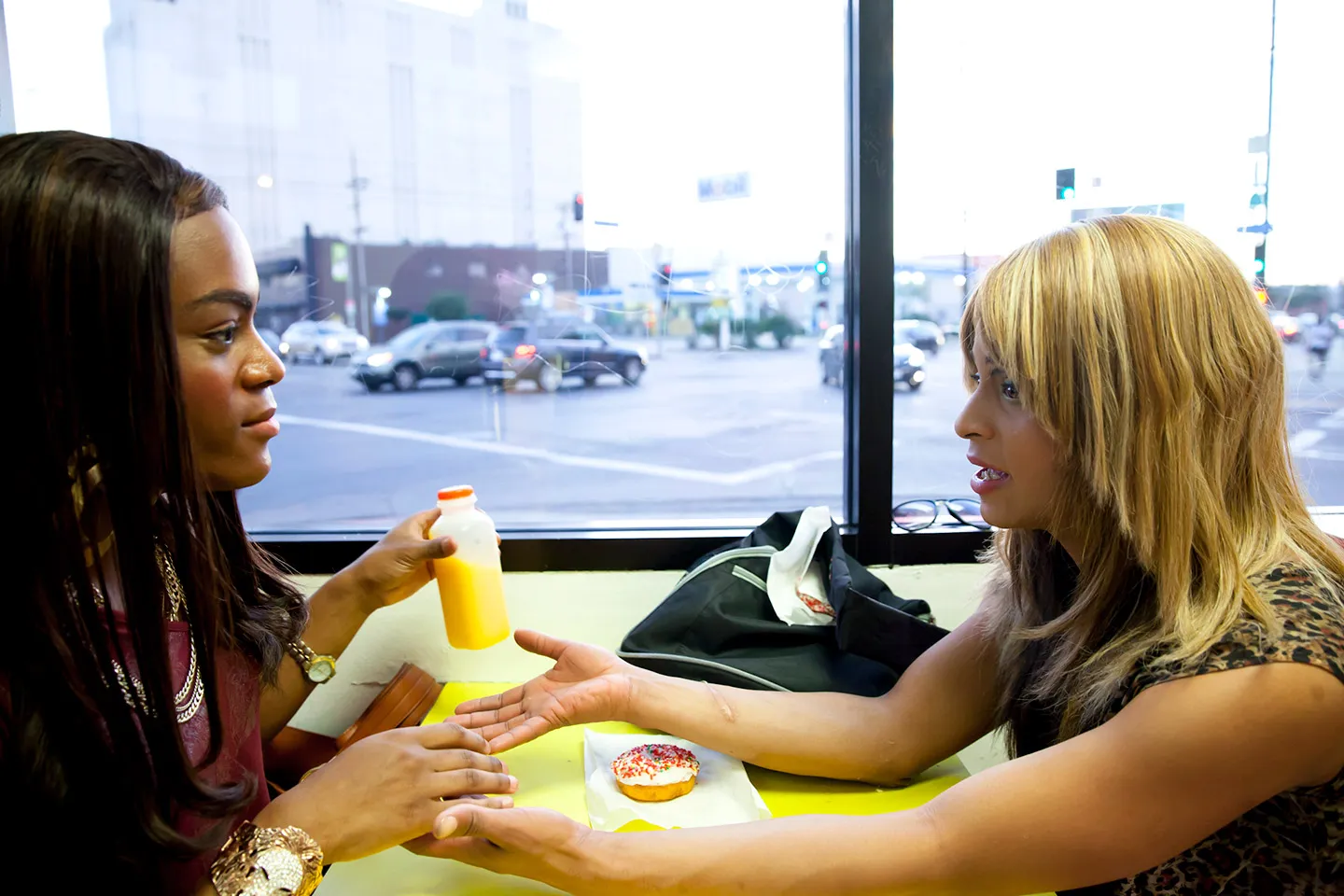
“Tangerine” serves as an invaluable lesson for aspiring filmmakers. You don’t need a massive budget or access to Hollywood-level resources to tell a compelling story. What you do need is a clear vision, an understanding of your subject matter, and the ingenuity to work within your limitations. Baker’s economic efficiency harks back to the Italian neorealists, who used non-professional actors and real locations to tell stories of ordinary people. It also echoes the Dogma 95 movement’s emphasis on authenticity and simplicity. Baker crafted a film that feels simultaneously timeless and contemporary by adhering to this straightforward philosophy.
Cultural Impact
Since its release, “Tangerine” has carved out a unique place in cinematic history. It’s often celebrated for its technological innovation, but its true legacy lies in its storytelling. The film’s authentic portrayal of trans women of color was groundbreaking in 2015 and remains relevant today. It challenges Hollywood’s tendency to tokenize or stereotype marginalized communities, offering instead a nuanced, empathetic depiction of its characters.
The film’s success also paved the way for greater representation in independent cinema. Baker’s follow-up film, “The Florida Project,” further cemented his reputation as a filmmaker who champions underrepresented voices. Together, these works highlight the importance of independent cinema as a platform for stories that mainstream Hollywood often overlooks. “Tangerine” is a true testament to the power of independent filmmaking and the resilience of marginalized communities. For me, it’s not just a Christmas classic but a reminder of why I love cinema in the first place. Sean Baker’s masterpiece proves that great storytelling transcends budgets and technical limitations. All you need is a good story, compelling characters, and the determination to make it happen.
So, this holiday season, I urge you to add “Tangerine” to your watchlist. It may not have the snowy landscapes or traditional trappings of a Christmas movie, but it captures the spirit of the season in a way that few films can. As you watch, keep in mind that Sean Baker’s “Tangerine” is a Christmas miracle, brimming with Vitamin C—where the C stands for “Christmas Cinema.”


